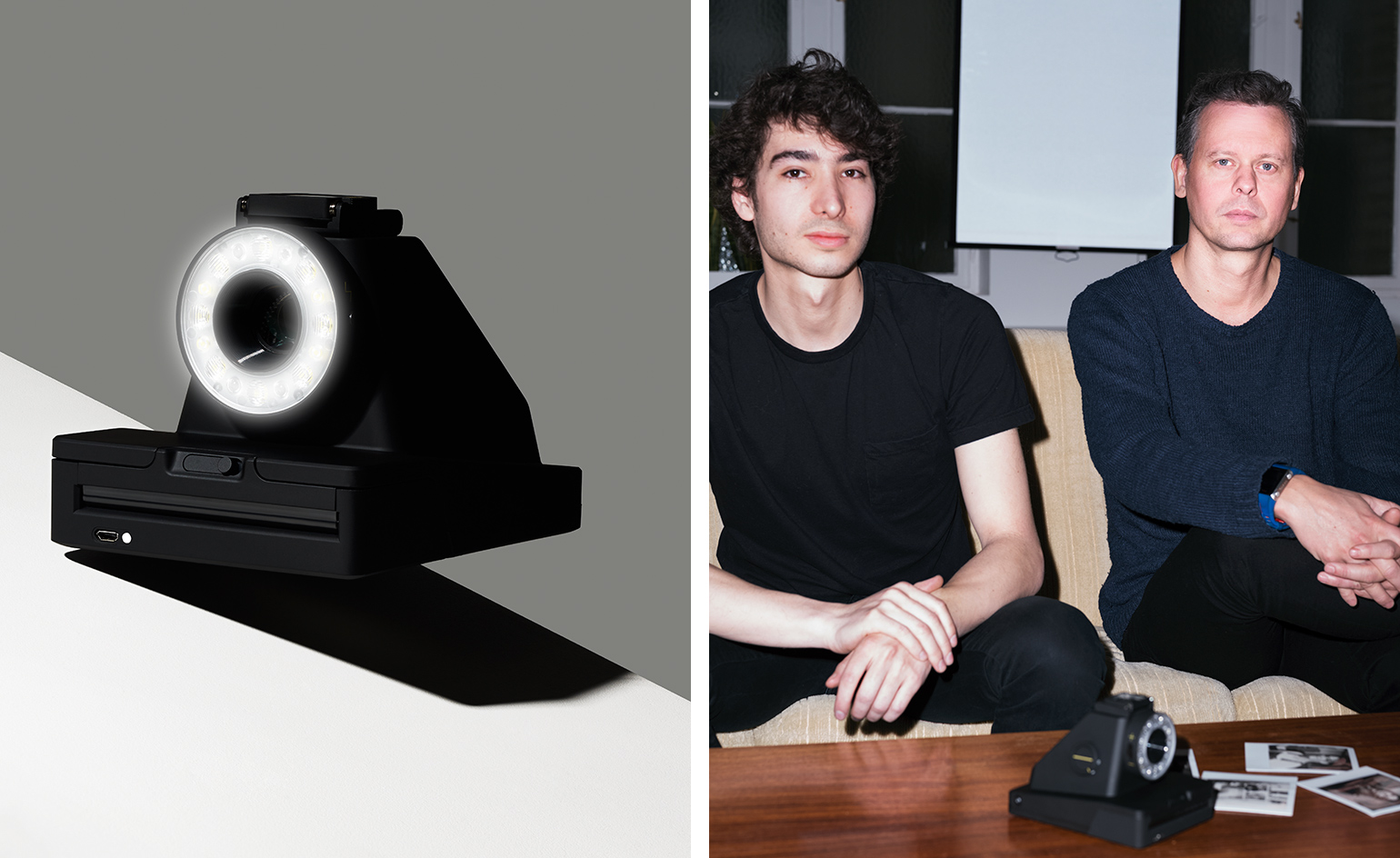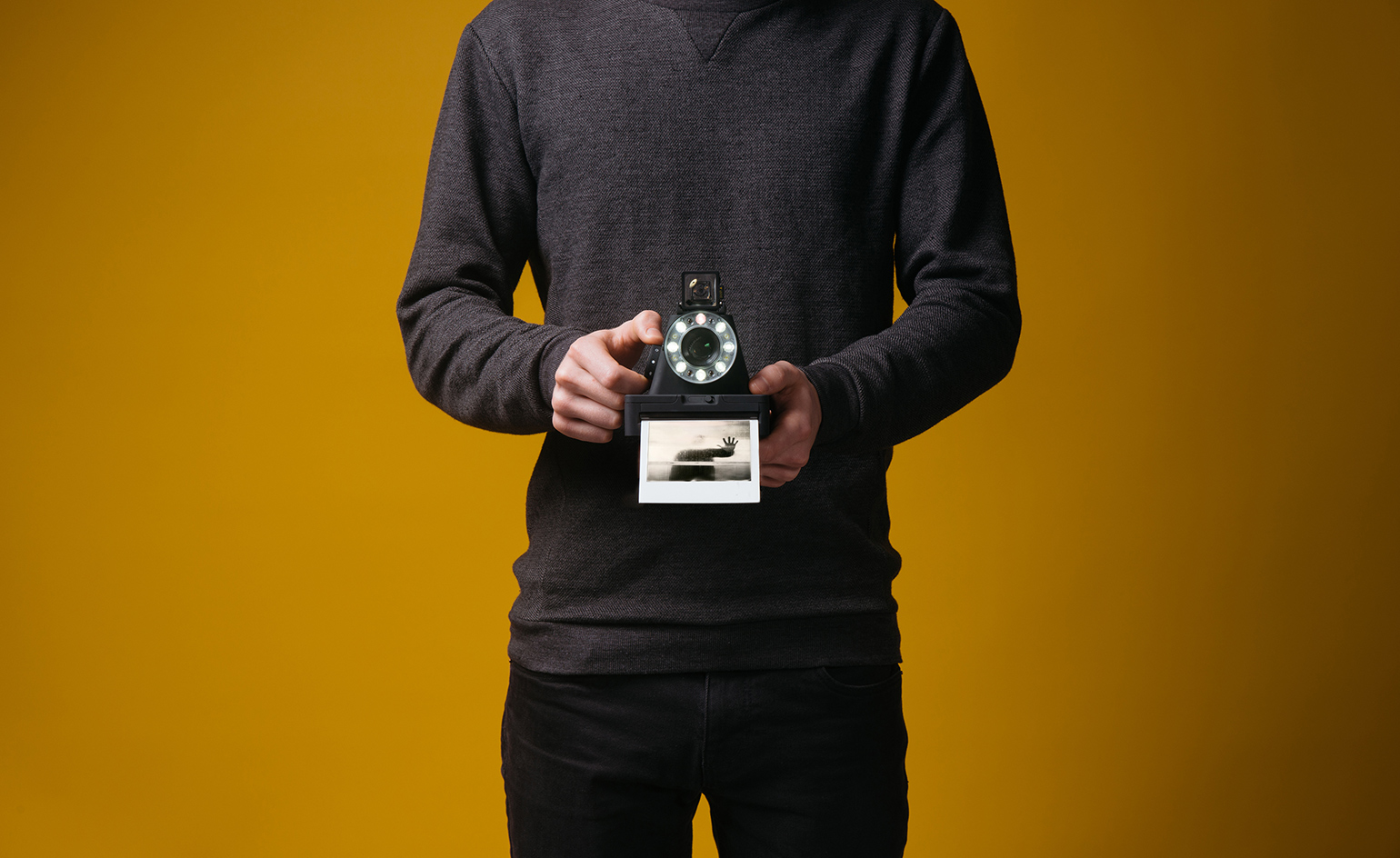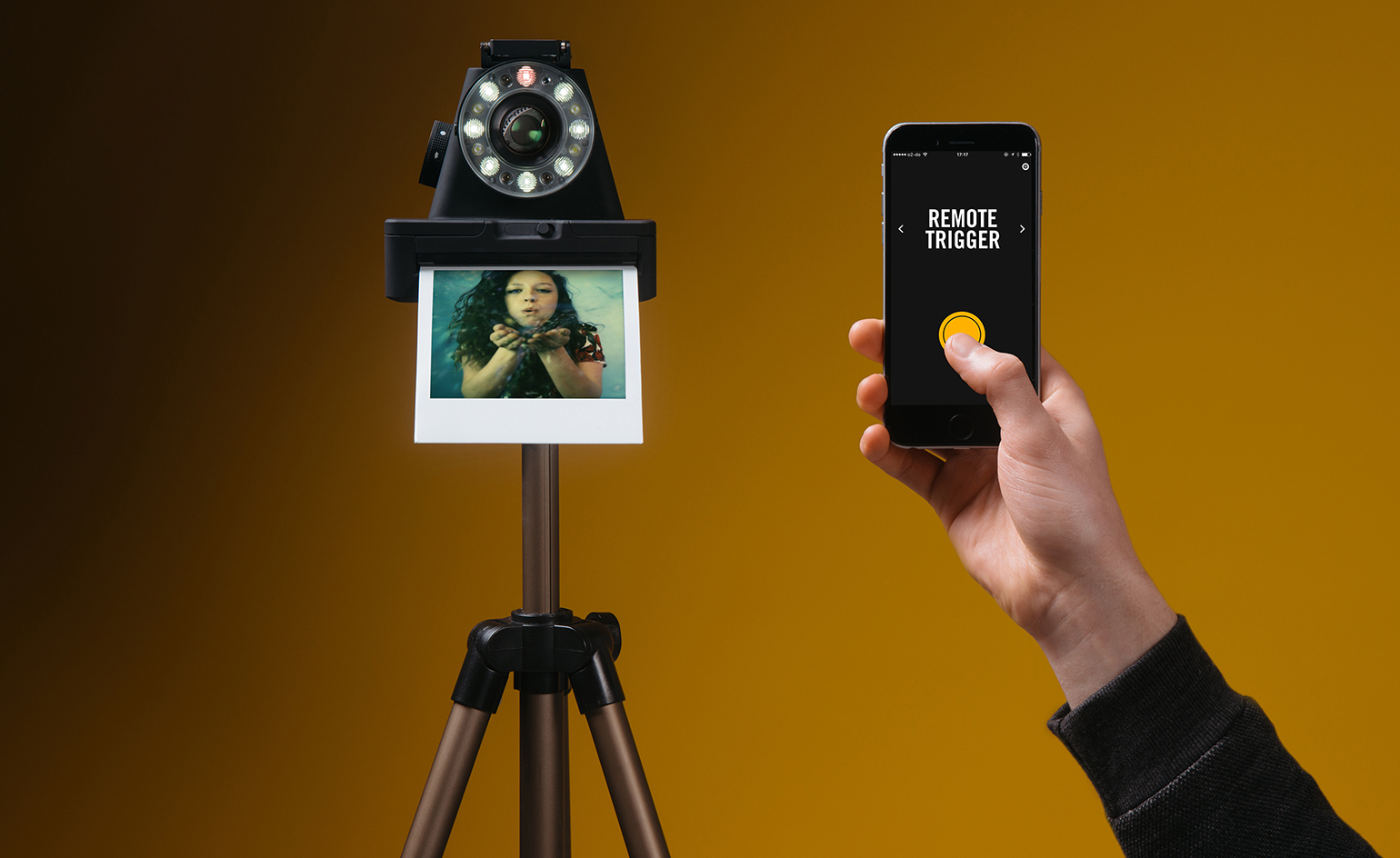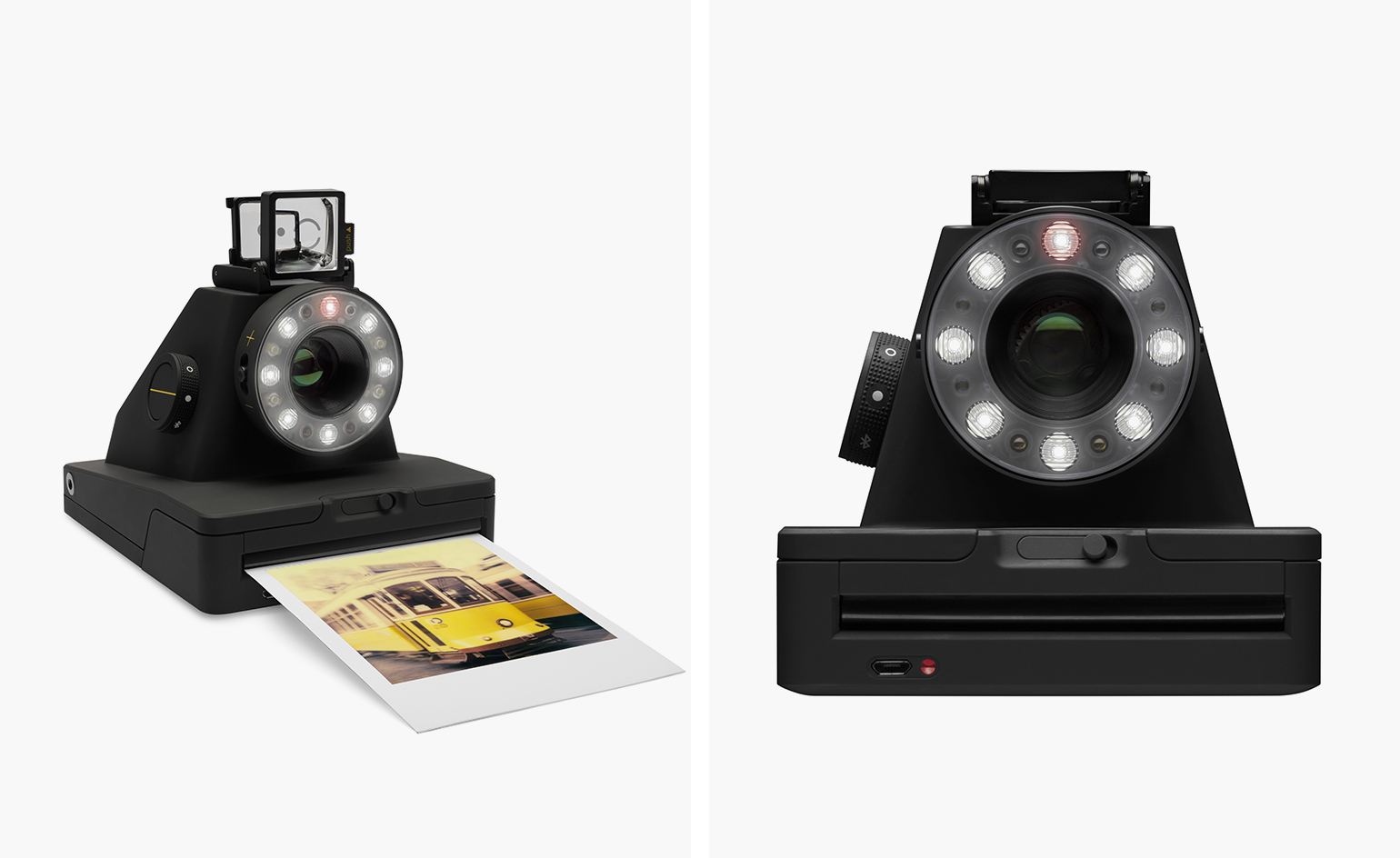One shot: there’s more than nostalgia to the I-1, a new digital-age Polaroid

Eight years ago, a company named Impossible Project saved the last Polaroid film factory from extinction and, with it, Polaroid instant photography. Since then, the more toxic elements have been tweaked out of the film, the quality has been improved, and now the company is bringing out a brand-new camera, the I-1, for what is hoped will be a whole new generation of analogue instant photographers. Great! But why do we need another technological panda in the old world panoply of consumer goods?
There was a time, not so very long ago, when we surrounded ourselves with consumer products that had single, dedicated functions: we had a watch, a wall clock, a telephone or two, a record player, a cassette player, a radio, a TV, a video player and a camera. But now we can pretty much accomplish all the tasks of the above and a whole lot more, with a single, hybrid, pocket-sized device. We are divesting ourselves of those other objects, all that clutter, obsolete tech and cabling.
And all the bulky storage volumes are fading out of sight along with them: records, cassettes, CDs, videos, photographs, books. Our words, pictures and memories are being relocated to enormous peripheral refrigerators masquerading as fluffy white clouds. As we shift from object to interface in our domestic environment, we are liberating ourselves, in a way, from ‘stuff’ – and many would even agree that the age of conspicuous consumption as we know it is drawing to a close.
Oskar Smolokowski, the fresh-faced 26-year-old CEO of Impossible Project, based in Berlin, thinks differently: ‘In the smartphone, we have a device that lets us communicate everything. It was incredibly empowering and new five or six years ago, but now it’s like air – we take these new powers for granted and are asking ourselves: “What else? What are the other ways in which we can experience things beyond the smartphone?”’ His argument is that the ubiquitous and high-level capabilities of the smartphone camera have taken something away from the user experience – the digital camera corrects everything for you. It’s almost impossible to take a bad picture and the sheer volume of images we capture is rendering them increasingly meaningless to us. What a single-function instant camera can deliver in the digital age is the art of randomness and uncertainty – less precision and less control – and a unique image as a physical object that you have to wait for while it reveals itself.
Since saving instant film production for the world in 2008, Impossible Project has dreamt of creating its own camera. But the I-1 is not a nostalgia project, says Smolokowski. ‘We believe an instant camera rightly belongs in 2016.’ To design the camera, he hired Jesper Kouthoofd, former co-founder of Acne and founder of Teenage Engineering, known for its micro-synthesisers. Kouthoofd shares Smolokowski’s view on the value of the single-function tool: ‘I really, really believe, when it comes to being creative, in one-purpose tools that are not precise,’ he says. ‘It’s a bit more like a person – more alive!’
Kouthoofd hadn’t designed a camera before, although he has designed some really interesting wireless audio synthesisers. ‘I think of myself as an engineer,’ he says, even though his background is in advertising. ‘I try to find out the smartest way to manufacture a product, to communicate the function, and also make it unique.’
His camera design is really rather good, both haptically and visually. There is something reminiscent of Jasper Morrison about its soft curves and quiet functionality. The form is defined by the necessity of accommodating the film cartridge case and he has added a neatly clever and powerful ring flash around the lens with eight LEDs that also indicate how many pictures you have left in the camera. The product graphics are clear and well proportioned, and the whole thing is coated in black rubberised paint, which helps you grip the rather bulky form, as well as looking good. ‘I really like that when you see the camera, you understand how it works,’ says Kouthoofd. The only particularly retro element is a satisfying fold-up viewfinder on the top, inspired by a Zeiss Ikonta 521 camera that Smolokowski found in a flea market.
Inside, in keeping with Polaroid tradition, the camera itself is about as simple as you can get: basic lens, shutter, mirror and cartridge holder. In fact, the specs for the I-1 were the first I had ever read for a camera that didn’t mention the lens at all. There are a couple of important additions and upgrades though: unlike the Polaroid, the I-1 contains a rechargeable battery to power the flash. In the old Polaroids, the batteries were inside the film pack, explains Smolokowski: ‘When Polaroid was making 100 million films, that was 100 million batteries going into landfill.’ Although Impossible Project still makes the battery-pack films for the old Polaroid cameras, all the new cameras will have films minus batteries. ‘That makes the film cheaper,’ says Smolokowski, ‘and it’s better for the environment.’
The other addition the I-1 has is a Bluetooth connection to an iOS app you can download on your smartphone. I find this rather surprising and ask whether this doesn’t negate all its makers have said about the virtues of their single-function product, but Smolokowski assures me that the digital access is purely there as an additional tool to control the analogue, should the user so desire: ‘It’s trying to take the precision, control and ease of use of the digital and harness it to create analogue results.’ The app means the user can play with double exposure, light painting and remote triggering, as well as control aperture and shutter speed remotely – but it also allows images to be uploaded directly to social channels. So it seems the I-1 is a hybrid after all, albeit a wonderfully physical one. And anyway, no one would agree that pandas aren’t worth saving, no matter how (bio)logically inefficient they might seem as a species.
As originally featured in the June 2016 issue of Wallpaper* (W*207)

The I-1 features an LED ring flash and a rubberised finish, and can be used as an analogue camera or in combination with an iOS app for greater functionality

Impossible Project rescued Polaroid in 2008, whereby 200m cameras were saved from becoming redundant

The only particularly retro element to the I-1 is a top-mounted fold-up viewfinder, inspired by a Zeiss Ikonta 521 camera that Smolokowski found in a flea market
INFORMATION
I-1 camera, £229. For more information, visit the Impossible Project website
Photography: Jonas Lindstrom & Baker Evans
Wallpaper* Newsletter
Receive our daily digest of inspiration, escapism and design stories from around the world direct to your inbox.
-
 Extreme Cashmere reimagines retail with its new Amsterdam store: ‘You want to take your shoes off and stay’
Extreme Cashmere reimagines retail with its new Amsterdam store: ‘You want to take your shoes off and stay’Wallpaper* takes a tour of Extreme Cashmere’s new Amsterdam store, a space which reflects the label’s famed hospitality and unconventional approach to knitwear
By Jack Moss
-
 Titanium watches are strong, light and enduring: here are some of the best
Titanium watches are strong, light and enduring: here are some of the bestBrands including Bremont, Christopher Ward and Grand Seiko are exploring the possibilities of titanium watches
By Chris Hall
-
 Warp Records announces its first event in over a decade at the Barbican
Warp Records announces its first event in over a decade at the Barbican‘A Warp Happening,' landing 14 June, is guaranteed to be an epic day out
By Tianna Williams